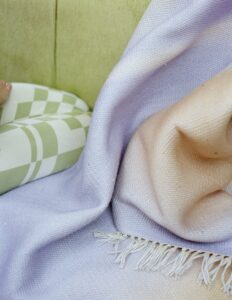There’s no doubt that the textile industry is one of the most environmentally damaging industries. And textile printing is the reason why.
One of the biggest issues of traditional textile printing is the massive amount of water and energy it consumes. For example, it takes about 2,700 liters of water to make just one cotton t-shirt.
Hence textile production is one of the most harmful things for the environment. And that’s not only due to the dying process, but also due to the manufacturing of the fabrics. However, in the past few years, the global textile industry has been focusing on becoming more and more sustainable.
One of the biggest revolutions in the industry has been the incorporation of digital textile printing technologies.

Digital printing saves huge amounts of water and it also generates fewer toxic chemicals. Yet those are not the only savings for the environment. The electricity used by digital printing is way lower than the produced by screen printing. Over 60% less. Fast fashion brands such as Inditex have started taking advantage of this technology.
Nevertheless the digital printing technique has also reached smaller businesses within the textile industry.
Allca, a rug brand, is one of those businesses that has joined the green alternative. The brand was actually born with the aim of exploring new creative possibilities. The challenge was to develop a desirable product through a sustainable process. Being a pioneer within the rug industry, Allca doesn’t only digitally print its rugs designs. The innovative rug brand also weaves them in a single mono-material: recycled post-consumer plastics. Those two characteristics of the brand reduce the water expenditure even more than digital printing does on its own. On the one hand, digital printing avoids the dying process saving loads of water. And on the other hand, using recycled plastic means there’s no need for irrigating the crops.

Also being a mono-material product means that its recycling is really feasible, serving for the creation of other polymeric products. The plastic can re-insert itself in the consumption chain. Therefore Allca uses recycled plastic that can be recycled again. Perfect way to give a new life to those plastics threatening our marine ecosystems worldwide. But those are not the only benefits the brand gets from digital printing. It also allows them to reduce its stock since they print the designs based on the interest of the clients. That way Allca can produce minimum quantities and be very flexible with customer demands. Moreover the technique offers a limitless color spectrum, so the graphic possibilities are endless. It definitely amplifies the expressive potential. And these are just some of the multiple advantages the technique offers.

So one thing is clear: digital printing is the future of the textile industry.
It is good for the planet, good for the customer and good for textile brands.
It is just a matter of time that little and big textile companies start joining the revolution.
For more information on the article please contact:
Haizea Nájera
haizeanajera@gmail.com











